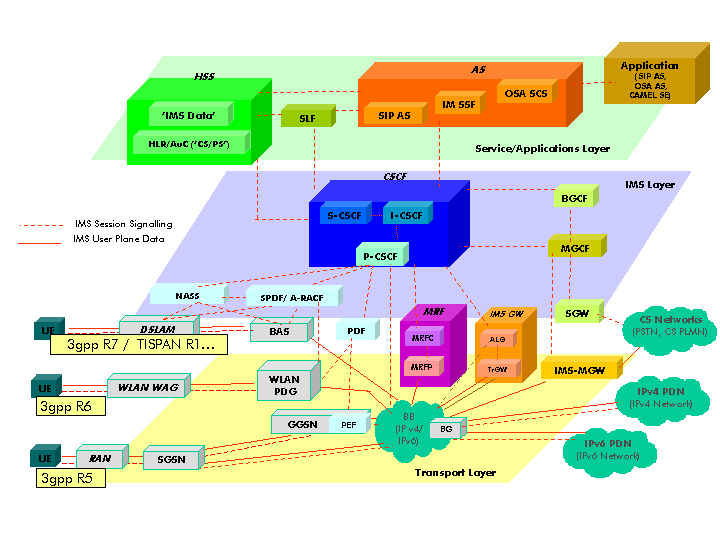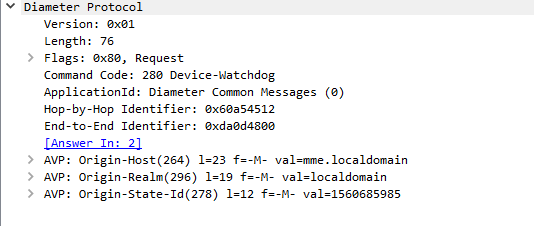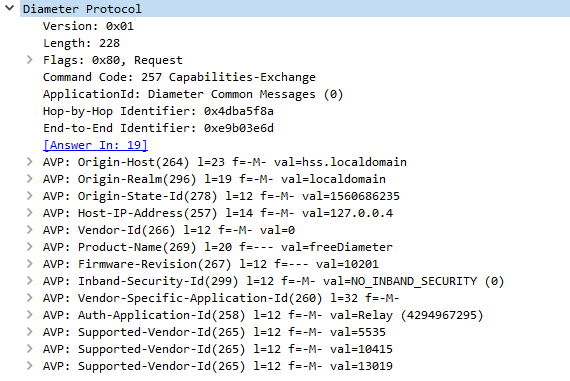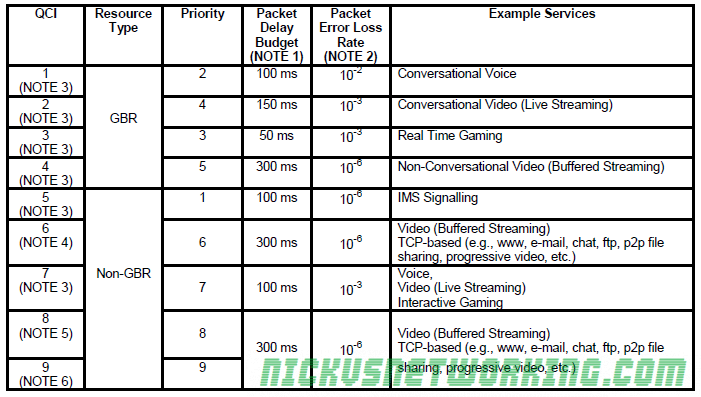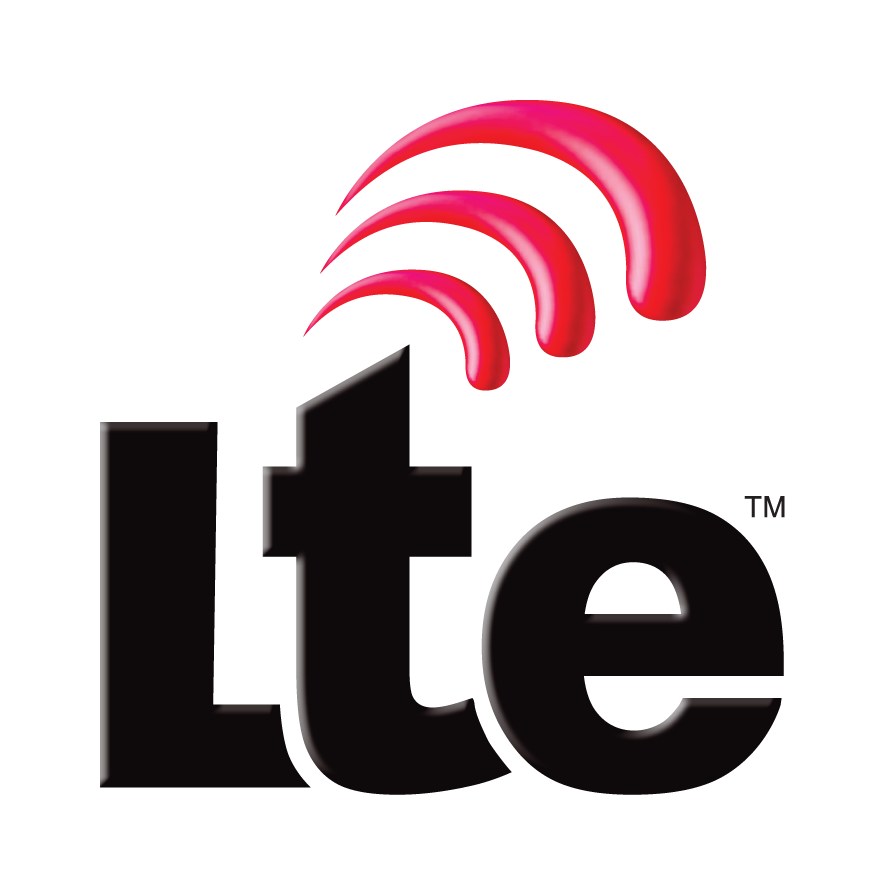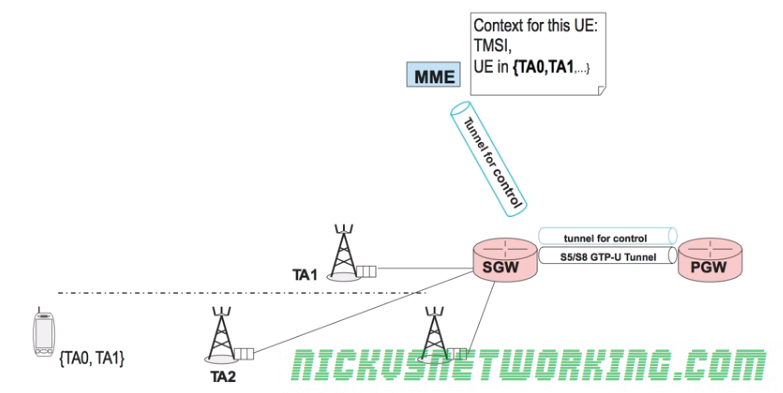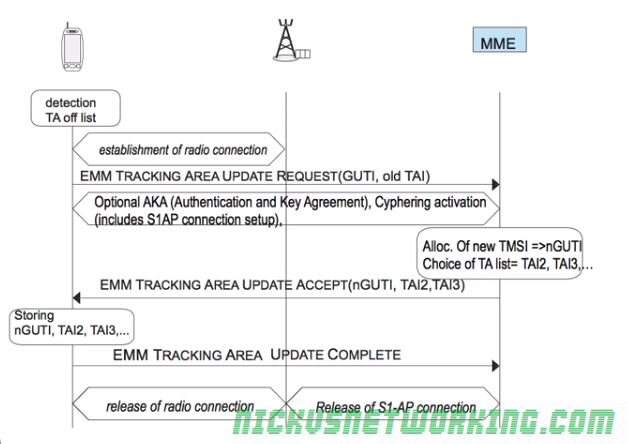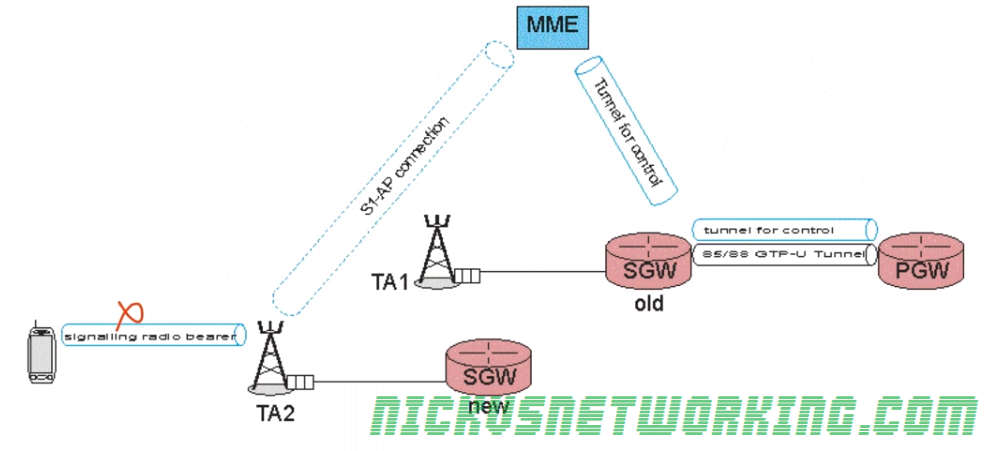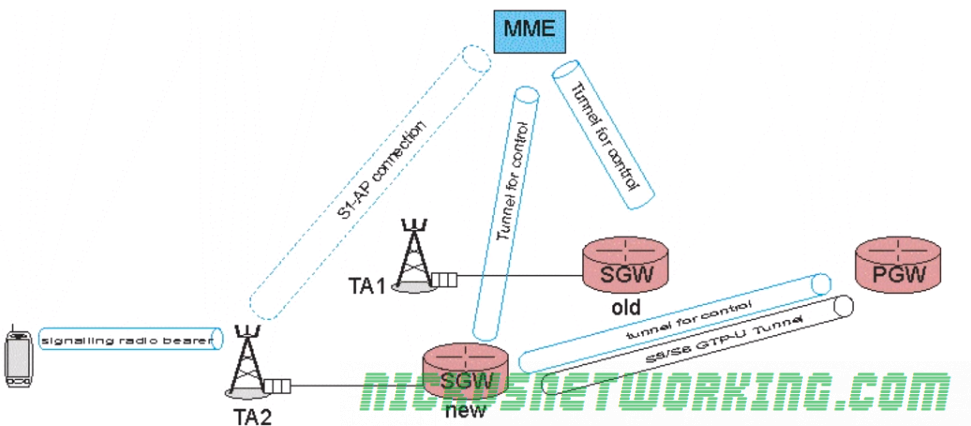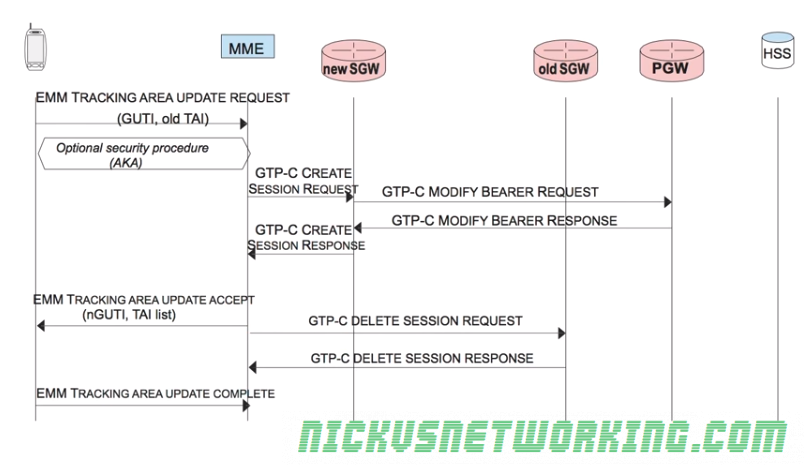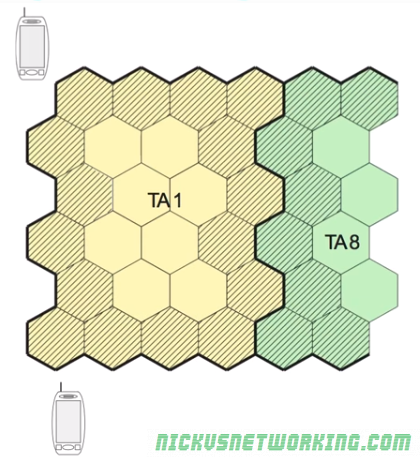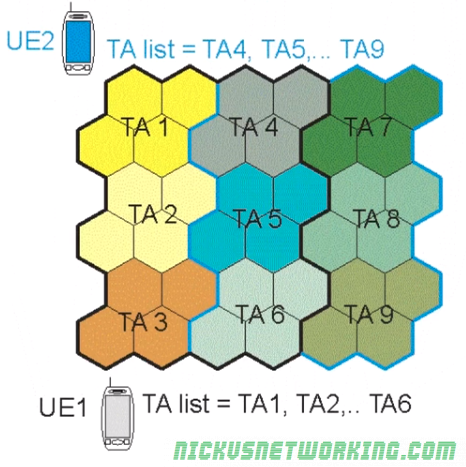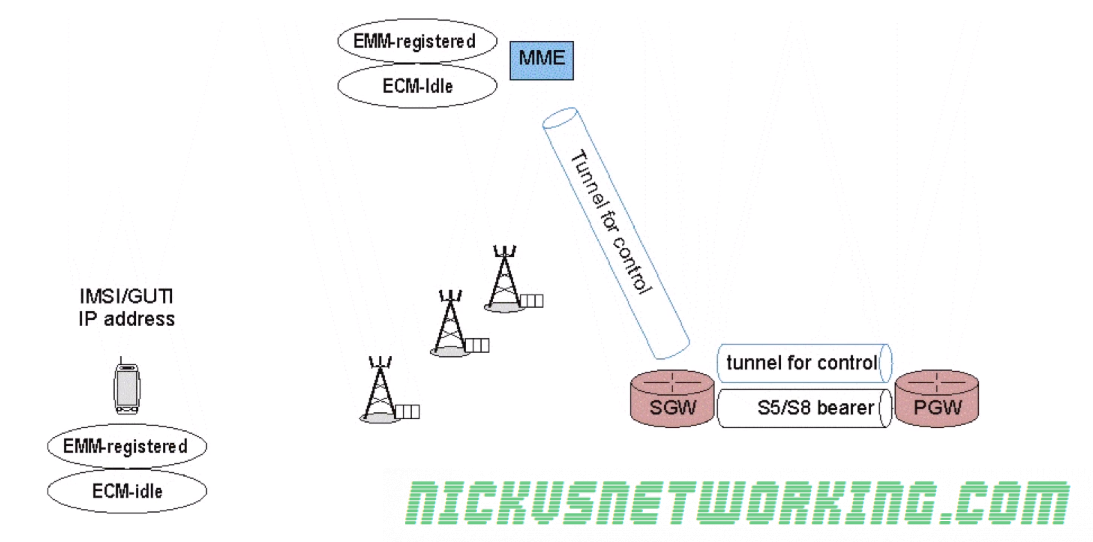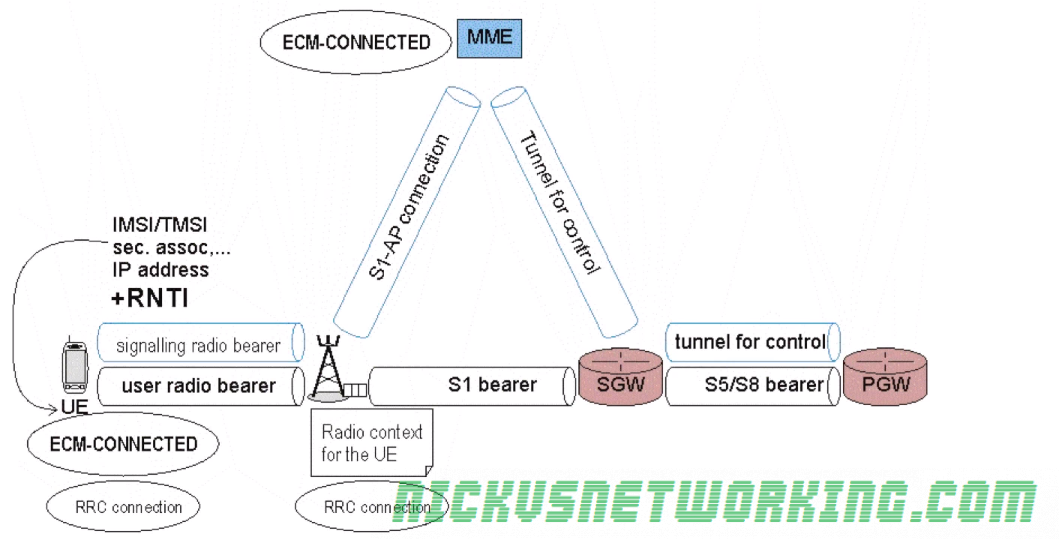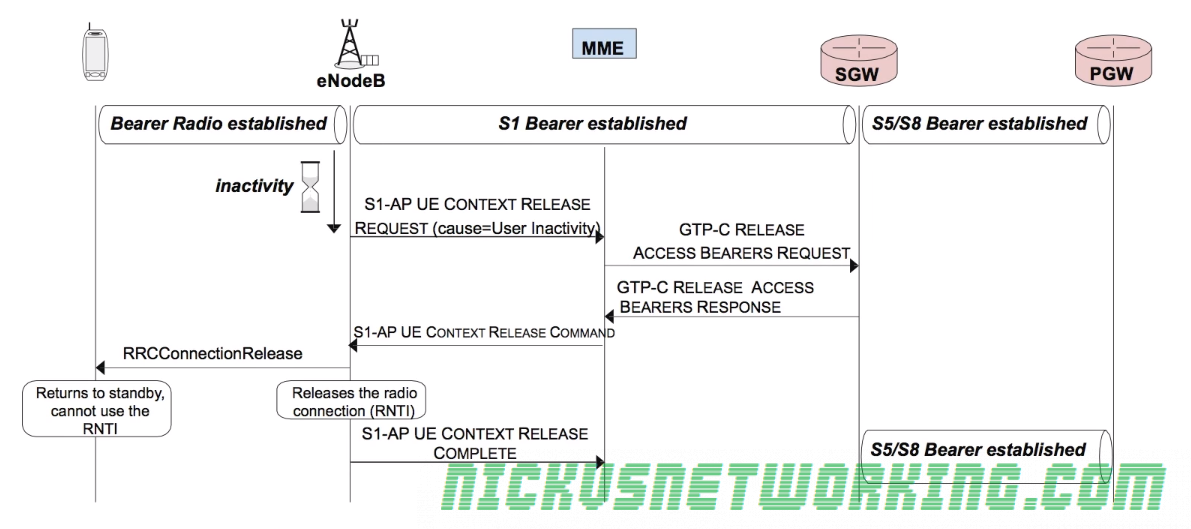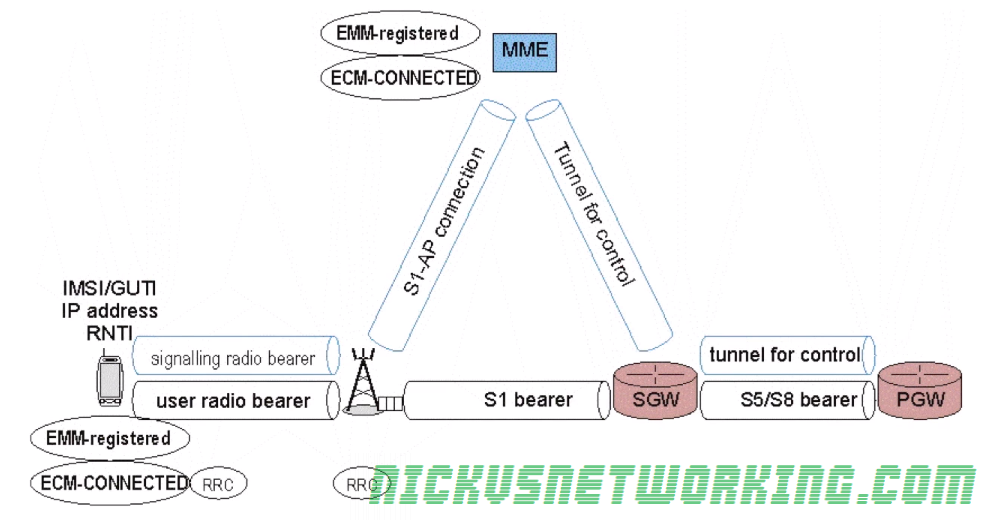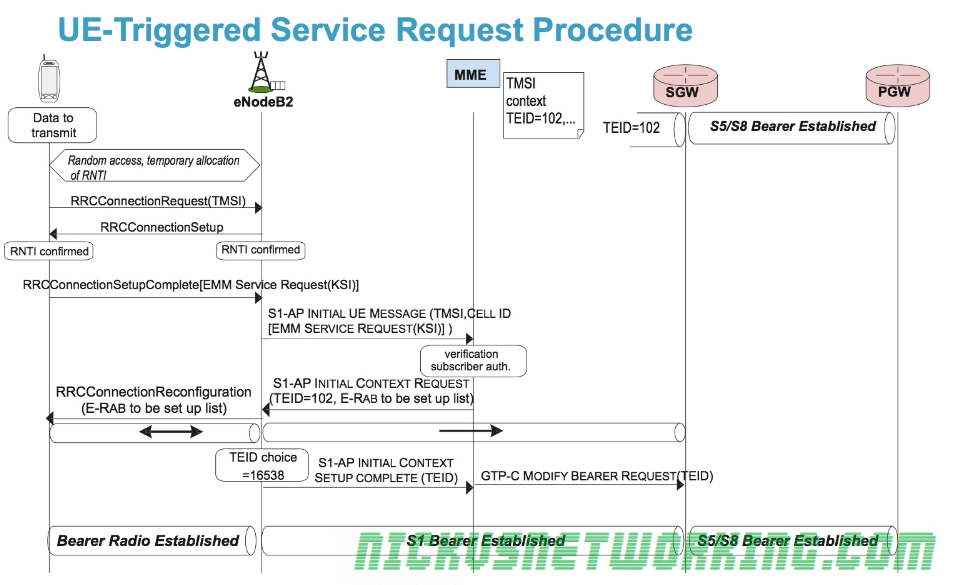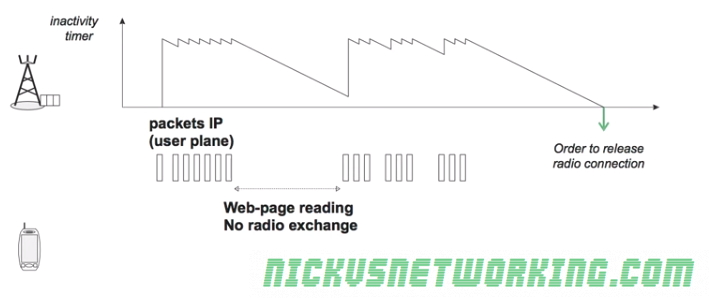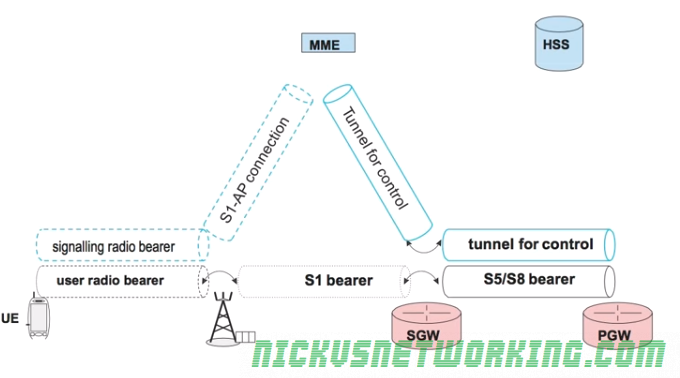Note: NextEPC the Open Source project rebranded as Open5Gs in 2019 due to a naming issue. The remaining software called NextEPC is a branch of an old version of Open5Gs. This post was written before the rebranding.
I’ve been working for some time on Private LTE networks, and wrote my own HSS (See PyHSS – Python Home Subscriber Server).
The packet core I’m using is NextEPC, it’s well written, flexible and well supported.
I joined the Open5Gs group and I’ve contributed a few bits and pieces to the project.
One of which was how to split all the network elements in NextEPC:
NextEPC Splitting Network Elements
In a production network network elements would typically not all be on the same machine, as is the default example that ships with NextEPC.
NextEPC is designed to be standards compliant, so in theory you can connect any core network element (MME, PGW, SGW, PCRF, HSS) from NextEPC or any other vendor to form a functioning network, so long as they are 3GPP compliant.
To demonstrate this we will cover isolating each network element onto it’s on machine and connect each network element to the other. For some interfaces specifying multiple interfaces is supported to allow connection to multiple
In these examples we’ll be connecting NextEPC elements together, but it could just as easily be EPC elements from a different vendor in the place of any NextEPC network element.
| Service | IP | Identity |
|---|---|---|
| P-GW | 10.0.1.121 | pgw.localdomain |
| S-GW | 10.0.1.122 | |
| PCRF | 10.0.1.123 | pcrf.localdomain |
| MME | 10.0.1.124 | mme.localdomain |
| HSS | 10.0.1.118 | hss.localdomain |
External P-GW
In it’s simplest from the P-GW has 3 interfaces:
- S5 – Connection to home network S-GW (GTP-C)
- Gx – Connection to PCRF (Diameter)
- Sgi – Connection to external network (Generally the Internet via standard TCP/IP)
S5 Interface Configuration
Edit /etc/nextepc/pgw.confand change the address to IP of the server running the P-GW for the listener on GTP-C and GTP-U interfaces.
pgw:
freeDiameter: pgw.conf
gtpc:
addr:
- 10.0.1.121
gtpu:
addr:
- 10.0.1.121
Gx Interface Configuration
Edit /etc/nextepc/freeDiameter/pgwd.conf
Update ListenOn address to IP of the server running the P-GW:
ListenOn = "10.0.1.121";
Update ConnectPeer to connect to the PCRF on it’s IP.
ConnectPeer = "pcrf.localdomain" { ConnectTo = "10.0.1.123"; No_TLS; };
Restart Services
Restart NextEPC PGW Daemon:
$ sudo systemctl restart nextepc-pgwd
External S-GW
In it’s simplest form the S-GW has 2 interfaces:
- S11 – Connection to MME (GTP-C)
- S5 – Connection to the home network P-GW (GTP-C)
S5 Interface Configuration
Edit /etc/nextepc/sgw.confand change the address to IP of the server running the S-GW for the listener on GTP-C interface.
sgw:
freeDiameter: pgw.conf
gtpc:
addr:
- 10.0.1.122
Restart NextEPC SGW Daemon:
$ sudo systemctl restart nextepc-sgwd
External PCRF
In it’s simplest from the PCRF has 1 network interface:
- Gx – Connection to P-GW (Diameter)
Gx Interface Configuration
Edit /etc/nextepc/freeDiameter/hss.conf
Update ListenOn address to IP of the server running the HSS on it’s IP:
ListenOn = "10.0.1.123";
Update ConnectPeer to connect to the MME.
ConnectPeer = "pgw.localdomain" { ConnectTo = "10.0.1.121"; No_TLS; };
MongoDB Interface Configuration (NextEPC HSS only)
Edit /etc/nextepc/freeDiameter/hss.conf and change the db_uri: to point at the HSS: db_uri: mongodb://10.0.1.118/nextepc
Restart NextEPC PCRF Daemon:
$ sudo systemctl restart nextepc-pcrfd
External HSS
In it’s simplest form the HSS has 1 network interface:
- S6a – Connection to MME (Diameter)
S6a Interface Configuration
Edit /etc/nextepc/freeDiameter/hss.conf
Update ListenOn address to IP of the server running the HSS on it’s IP:
ListenOn = "10.0.1.118";
Update ConnectPeer to connect to the MME.
ConnectPeer = "mme.localdomain" { ConnectTo = "10.0.1.124"; No_TLS; };
Restart NextEPC HSS Daemon:
$ sudo systemctl restart nextepc-hssd
MongoDB Interface Configuration (NextEPC specific)
If you are using NextEPC’s HSS you may need to enable MongoDB access from the PCRF. This is done by editing ‘‘/etc/mongodb.conf’’ and changing the bind IP to: bind_ip = 0.0.0.0
Restart MongoDB for changes to take effect.
$ /etc/init.d/mongodb restart
External MME
In it’s simplest form the MME has 3 interfaces:
- S1AP – Connections from eNodeBs
- S6a – Connection to HSS (Diameter)
- S11 – Connection to S-GW (GTP-C)
S11 Interface Configuration
Edit /etc/nextepc/mme.conf, filling the IP address of the S-GW and P-GW servers.
sgw:
gtpc:
addr: 10.0.1.122
pgw:
gtpc:
addr:
- 10.0.1.121
S6a Interface Configuration
Edit /etc/nextepc/freeDiameter/mme.conf
Update ListenOn address to IP of the server running the MME:
ListenOn = "10.0.1.124";
Update ConnectPeer to connect to the PCRF on it’s IP.
ConnectPeer = "hss.localdomain" { ConnectTo = "10.0.1.118"; No_TLS; };
Restart Services
Restart NextEPC MME Daemon:
$ sudo systemctl restart nextepc-mmed


